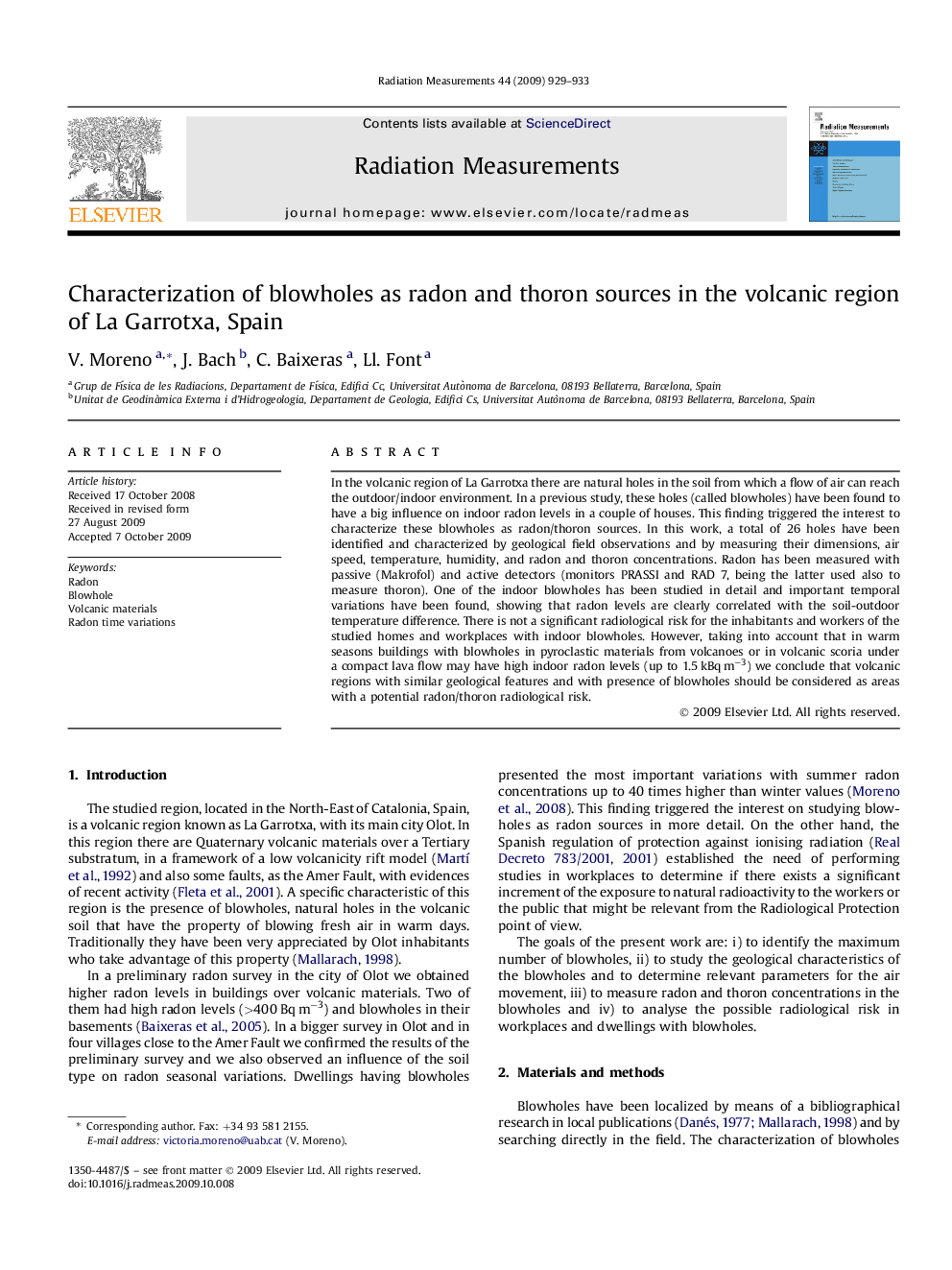| Article ID | Journal | Published Year | Pages | File Type |
|---|---|---|---|---|
| 1881755 | Radiation Measurements | 2009 | 5 Pages |
Abstract
In the volcanic region of La Garrotxa there are natural holes in the soil from which a flow of air can reach the outdoor/indoor environment. In a previous study, these holes (called blowholes) have been found to have a big influence on indoor radon levels in a couple of houses. This finding triggered the interest to characterize these blowholes as radon/thoron sources. In this work, a total of 26 holes have been identified and characterized by geological field observations and by measuring their dimensions, air speed, temperature, humidity, and radon and thoron concentrations. Radon has been measured with passive (Makrofol) and active detectors (monitors PRASSI and RAD 7, being the latter used also to measure thoron). One of the indoor blowholes has been studied in detail and important temporal variations have been found, showing that radon levels are clearly correlated with the soil-outdoor temperature difference. There is not a significant radiological risk for the inhabitants and workers of the studied homes and workplaces with indoor blowholes. However, taking into account that in warm seasons buildings with blowholes in pyroclastic materials from volcanoes or in volcanic scoria under a compact lava flow may have high indoor radon levels (up to 1.5 kBq mâ3) we conclude that volcanic regions with similar geological features and with presence of blowholes should be considered as areas with a potential radon/thoron radiological risk.
Keywords
Related Topics
Physical Sciences and Engineering
Physics and Astronomy
Radiation
Authors
V. Moreno, J. Bach, C. Baixeras, Ll. Font,
